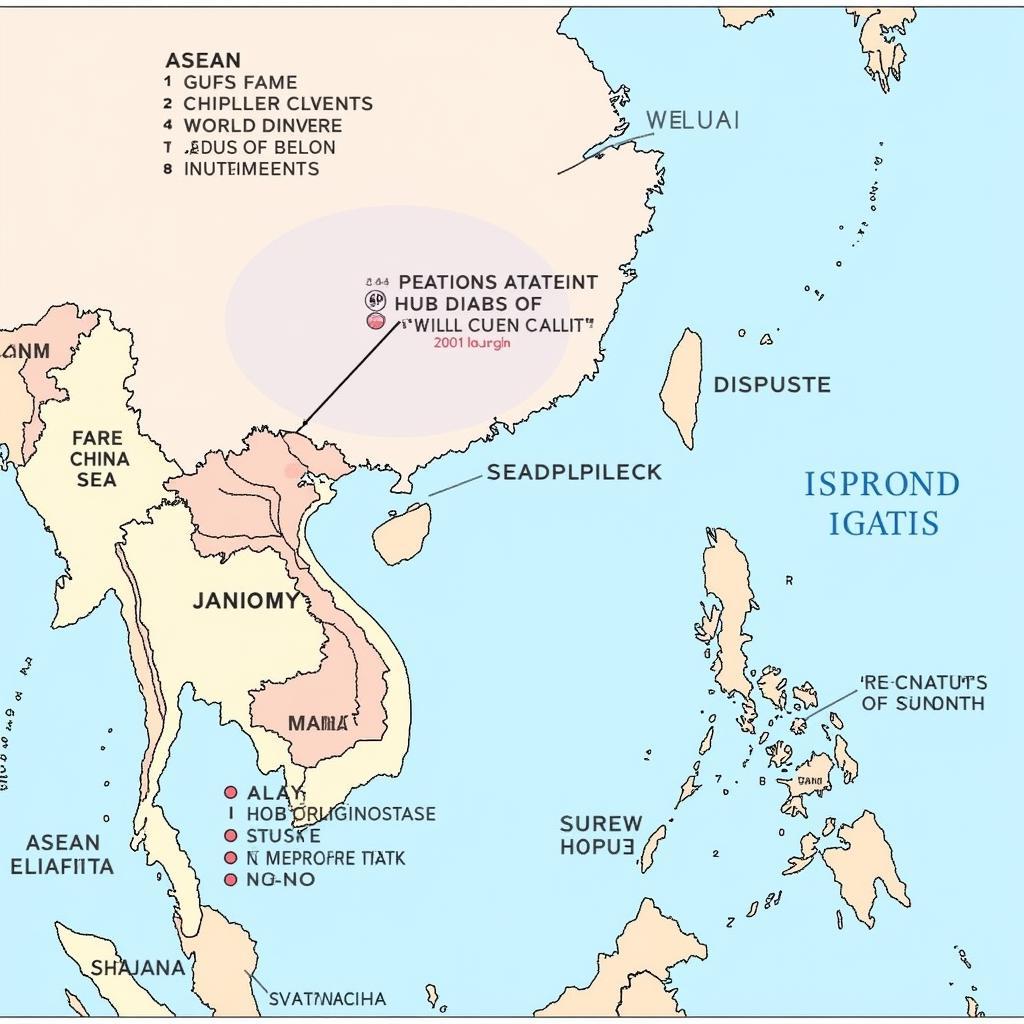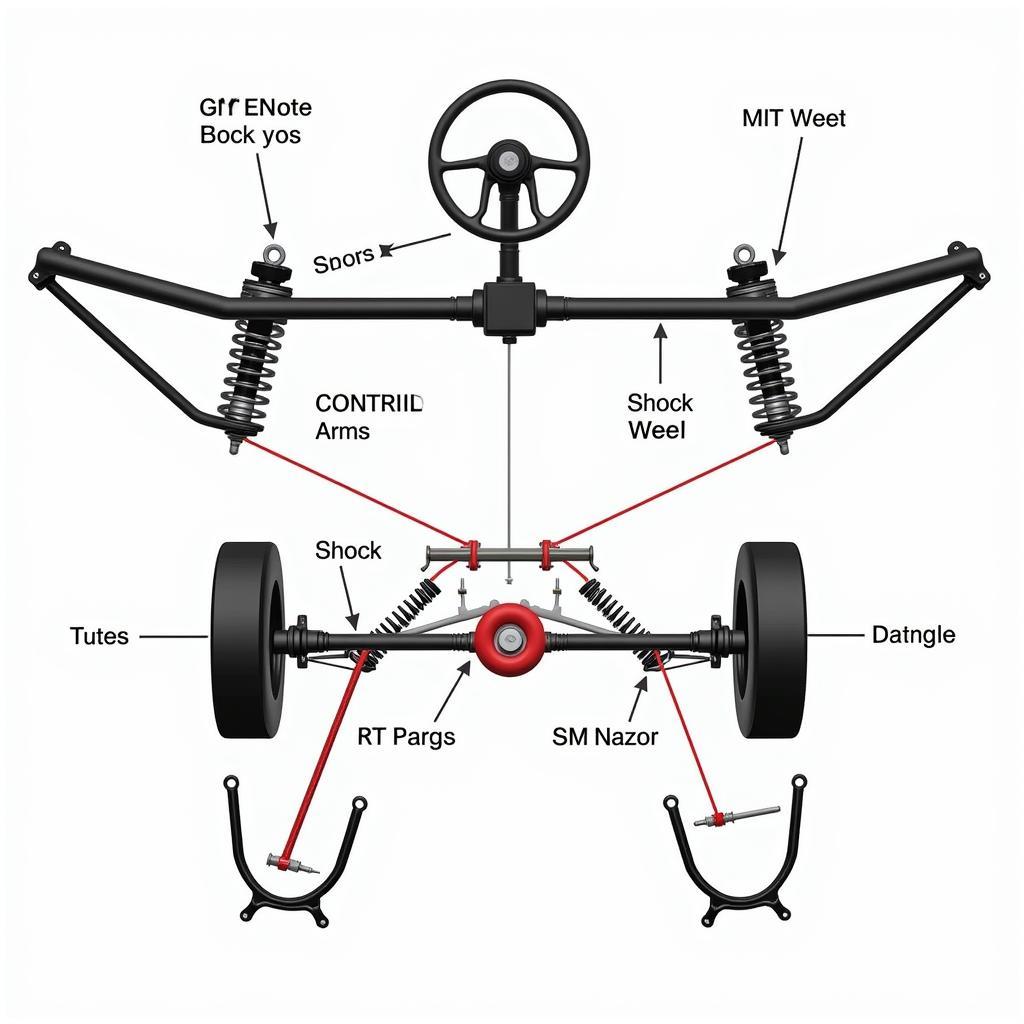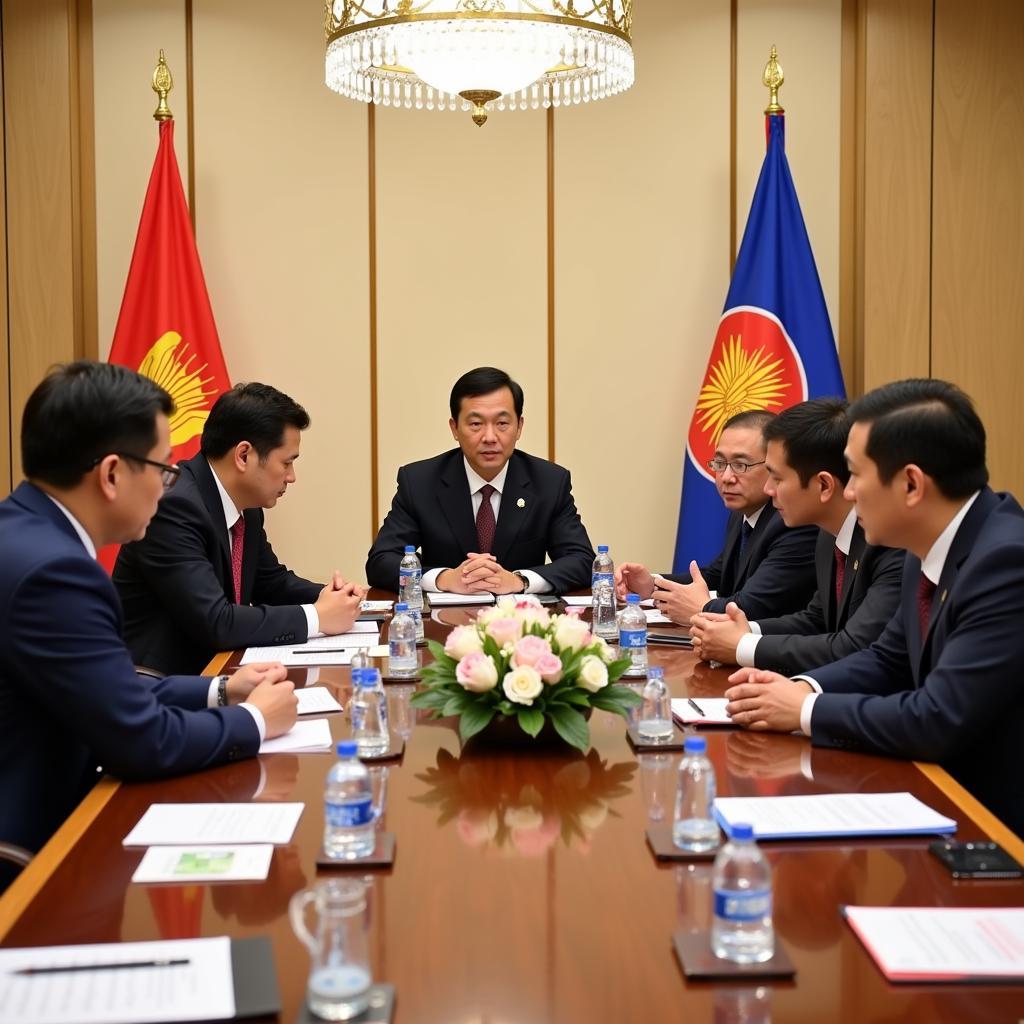The year 2010 witnessed several conflicts and tensions across Asia, highlighting the critical role of ASEAN in maintaining regional stability. From maritime disputes to internal political upheavals, the region faced numerous challenges that threatened peace and security. This article delves into the key conflicts of 2010, analyzing ASEAN’s responses and their impact on the region’s geopolitical landscape.
The South China Sea disputes continued to simmer in 2010, with tensions escalating between several claimant states. Incidents involving fishing vessels and exploration activities further fueled the disagreements. Meanwhile, internal conflicts in some ASEAN member states added to the complexity of the situation. How did ASEAN navigate these turbulent waters?
Navigating the South China Sea Disputes in 2010
The South China Sea remained a focal point of tension in 2010. China’s assertive claims over vast swathes of the sea clashed with the claims of several ASEAN member states, including Vietnam, the Philippines, Malaysia, and Brunei. Incidents at sea, such as the harassment of fishing vessels and confrontations over oil and gas exploration, further strained relations. ASEAN’s efforts to facilitate dialogue and cooperation among the claimant states were crucial in preventing the situation from escalating into a full-blown conflict.
 South China Sea Disputes 2010: ASEAN Response
South China Sea Disputes 2010: ASEAN Response
ASEAN’s approach emphasized the importance of peaceful resolution through diplomatic channels and adherence to international law, particularly the United Nations Convention on the Law of the Sea (UNCLOS). The organization sought to establish a Code of Conduct in the South China Sea to manage maritime activities and prevent misunderstandings. While progress on the Code of Conduct remained slow, ASEAN’s consistent calls for dialogue and cooperation helped to maintain a semblance of stability in the region. This delicate balance often involved navigating the competing interests of its members and external powers, particularly China and the United States. The evolving relationship between ASEAN, the US, and China is explored further in resources like ASEAN Between US and China.
Internal Conflicts and ASEAN’s Response
Beyond the South China Sea, 2010 also saw internal conflicts and political instability within some ASEAN member states. These internal challenges often spilled over into regional affairs, impacting ASEAN’s ability to address broader security concerns. The political landscape within certain member states posed a significant test to ASEAN’s principles of non-interference and consensus-based decision-making.
ASEAN’s response to these internal conflicts was often cautious, balancing its commitment to non-interference with the need to promote stability and prevent humanitarian crises. The organization provided platforms for dialogue and mediation, offering assistance in areas such as conflict resolution and capacity building. The dynamics of ASEAN and its members, particularly influential figures like Aung San Suu Kyi, are discussed in articles such as ASEAN and Aung San Suu Kyi. This nuanced approach was essential for maintaining ASEAN unity and its credibility as a regional organization.
The Role of Dialogue and Diplomacy
ASEAN’s emphasis on dialogue and diplomacy proved invaluable in mitigating the impact of the 2010 Asia conflicts. Through various forums and mechanisms, ASEAN provided a platform for communication and negotiation between conflicting parties. These efforts, though sometimes criticized for their slow pace, played a vital role in preventing escalation and fostering a sense of shared responsibility for regional stability. The diversity within ASEAN, encompassing ten distinct nations, is analyzed in pieces like ASEAN 10 6. This diversity, while challenging, ultimately strengthens the organization’s ability to address complex regional issues.
Dr. Anya Sharma, a Southeast Asian political analyst, observes, “ASEAN’s strength lies in its ability to bring diverse nations together to address shared challenges. While progress can be slow, the commitment to dialogue and diplomacy remains a cornerstone of its approach to conflict resolution.” This patient approach often yields positive results, although the process requires careful navigation of complex geopolitical dynamics.
Conclusion
The 2010 Asia conflicts presented significant challenges to regional stability, testing ASEAN’s capacity to manage tensions and promote cooperation. While the South China Sea disputes and internal conflicts within member states posed serious threats, ASEAN’s unwavering commitment to dialogue, diplomacy, and peaceful resolution played a crucial role in preventing escalation and maintaining a degree of equilibrium. The 2010 Asia Conflicts Asean faced served as a critical test of the organization’s resilience and adaptability, ultimately reinforcing its importance as a cornerstone of regional peace and security.
FAQ
- What were the major conflicts in Asia in 2010?
- How did ASEAN respond to the South China Sea disputes in 2010?
- What role did ASEAN play in addressing internal conflicts within member states in 2010?
- What are the key principles of ASEAN’s approach to conflict resolution?
- How effective was ASEAN in managing the 2010 Asia conflicts?
- What challenges did ASEAN face in addressing these conflicts?
- What lessons can be learned from ASEAN’s experience in 2010?
Common Scenarios and Questions
-
Scenario: A researcher is studying the effectiveness of ASEAN’s conflict resolution mechanisms.
-
Question: What were the specific outcomes of ASEAN’s interventions in the 2010 Asia conflicts?
-
Scenario: A journalist is writing an article about the South China Sea disputes.
-
Question: How did the 2010 incidents in the South China Sea influence ASEAN’s policy towards China?
Further Exploration
For more information on related topics, explore these resources:
- ASEAN’s official website
- Articles and reports from think tanks specializing in Southeast Asian affairs
- Academic journals focusing on international relations and conflict resolution
When you need assistance, please contact us at Phone Number: 0369020373, Email: [email protected] Or visit us at: Ngoc Lien Village, Hiep Hoa, Bac Giang, Vietnam. We have a 24/7 customer service team.


